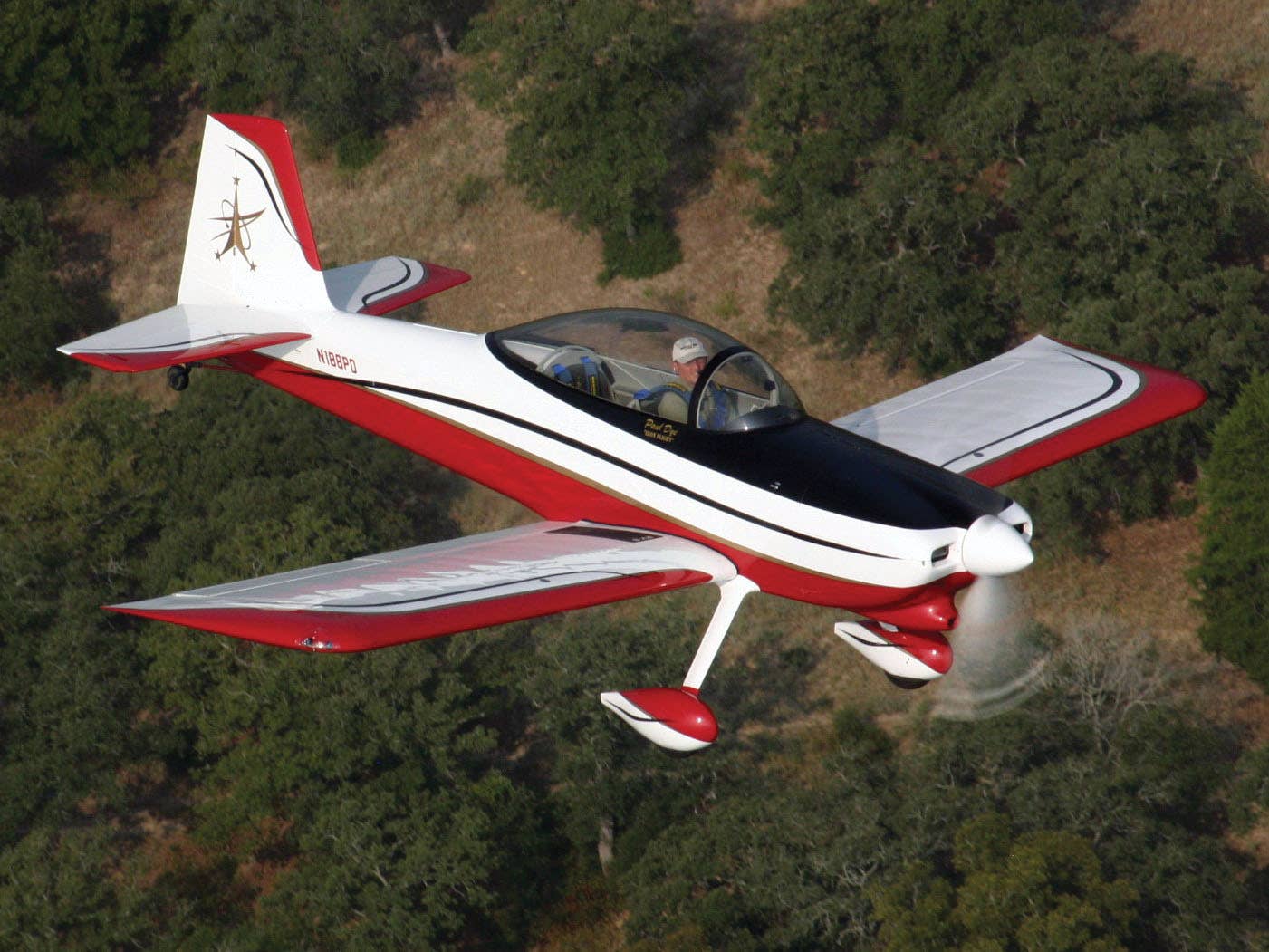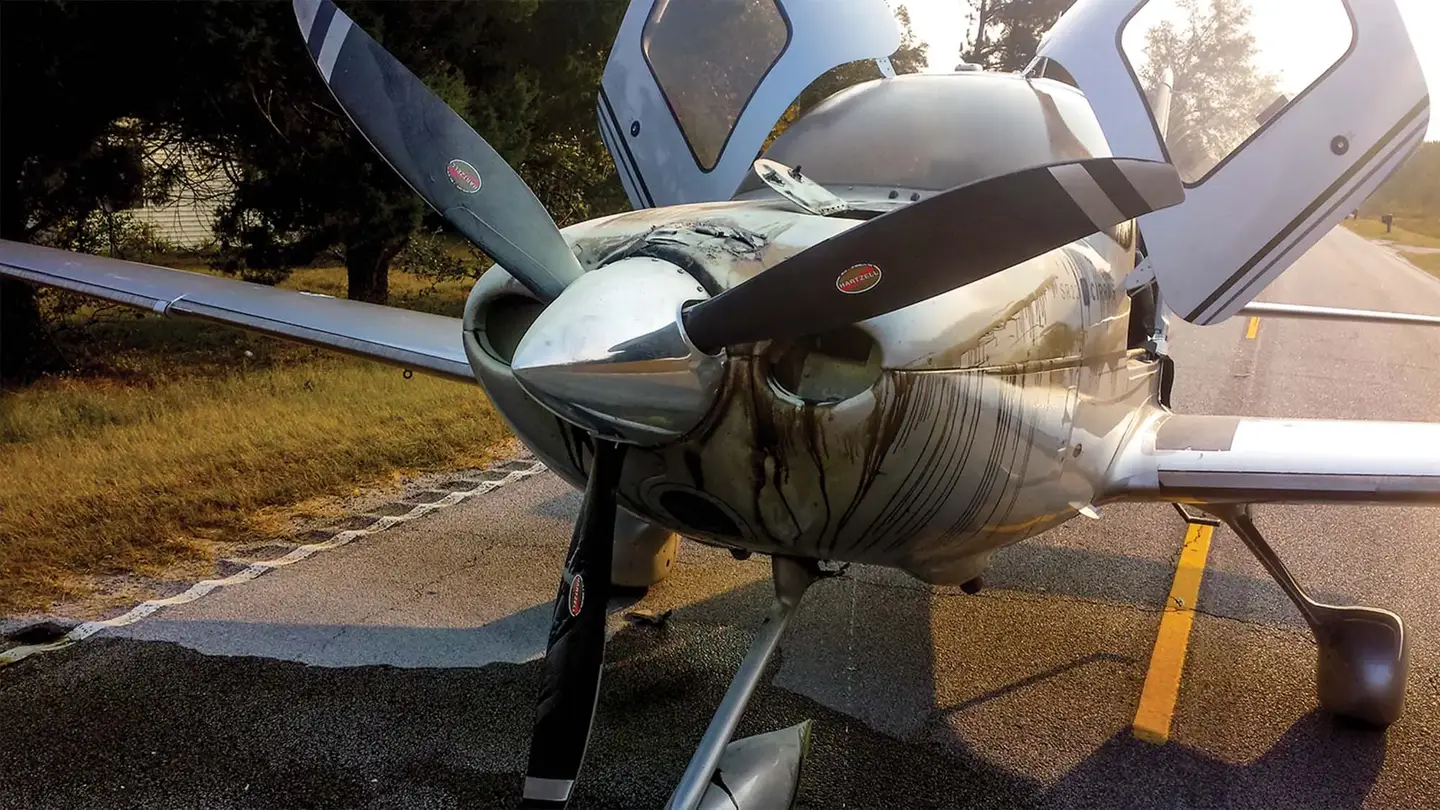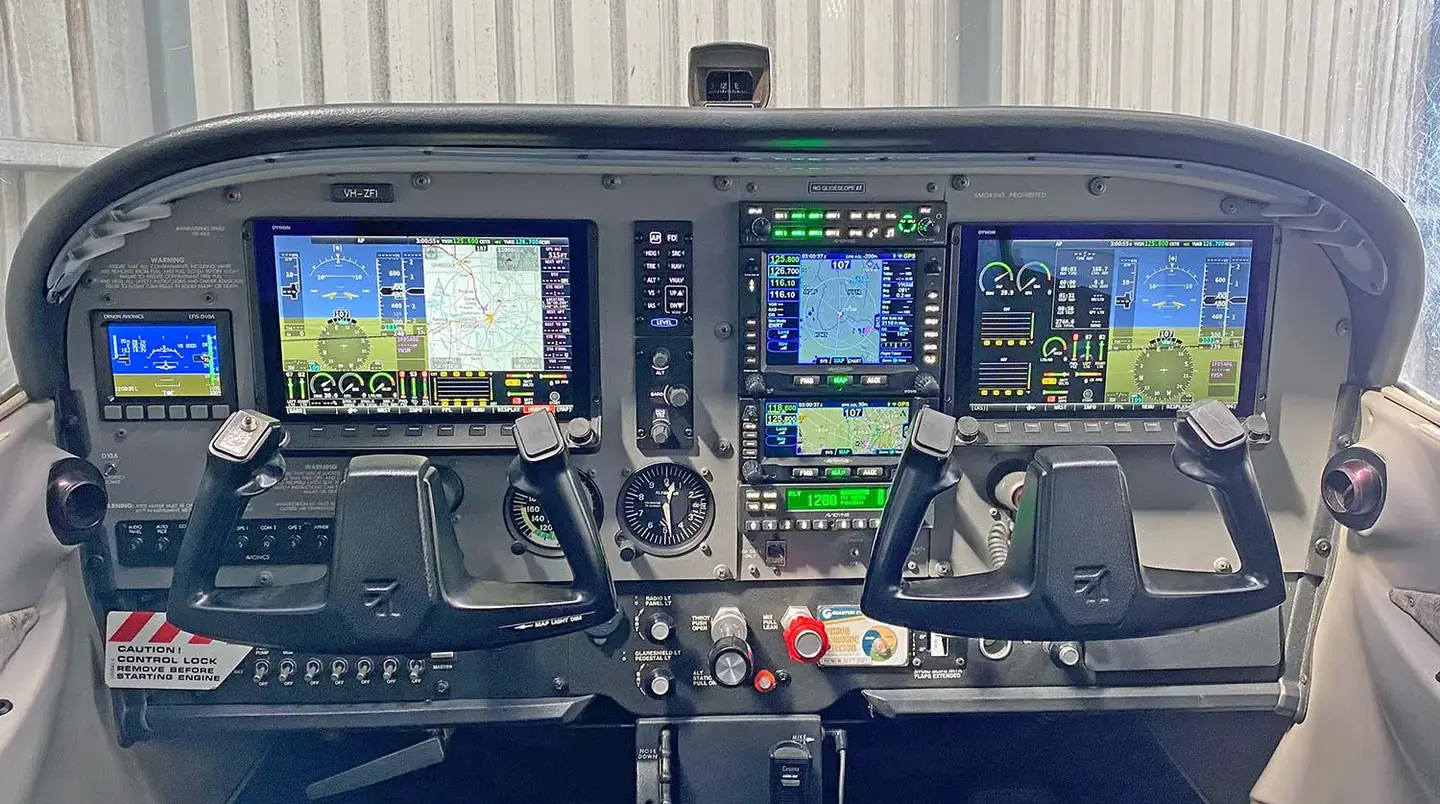
Like many RV builders of the early 2000s, I was a Yankee refugee. I had been an active member of the American Yankee Association—the type club for those who owned American (and Grumman American) Yankees, Cheetahs and Tigers, the descendants of Jim Bede’s BD-1—for over 20 years, but we all saw the writing on the wall. Airframe parts were becoming scarce and things were wearing out. While there were plenty of STCs to increase horsepower and range, for the two-seaters they were still going to be 35 or 40 (or 50) knots slower than the fast-growing field of RVs. And so the migration began!
I first became significantly aware of the RV-8 when one of the young engineers in my organization told me that he was starting on an RV-7. While I had been working on and modifying airplanes most of my life, I had never seriously thought about a metal homebuilt ever since I saw an article on a beautiful Thorp or Mustang that was taking its builder (a professional sheet metal worker) more than a decade to complete. I had worked with frame and fabric, and tinkered with sheet metal trim—but forming all of those parts? That seemed like a lifetime project that might never be finished.
But I took a look at the web page for Van’s Aircraft that my young engineer brought up on the computer and began reading. I was astounded by the quickbuild options available, and a look at pictures and sample plans made me realize that kit aircraft had come a long way from the start-up days. And while the RV-7 looked a lot like a very high-performance (in all respects) Yankee, the RV-8 page immediately drew my eyes in the direction of the powerful new tandem. Wow! This thing looked like a poor man’s P-51D, and while it couldn’t go 400 mph, it certainly appeared to be fast and maneuverable. Dick VanGrunsven once told me that “the RV-8 flies like the average pilot thinks a P-51 flies—but in fact, the P-51 is much heavier and the RV-8 is much lighter and more responsive in its flight envelope.” Having never flown a P-51, I can’t make a comparison. But I have heard similar stories from those who have flown both.
Despite my immediate infatuation with the RV-8, I didn’t immediately pick up the phone and place an order. I’m an engineer, so I had to do my homework first. I read everything I could find about the airplane and the kit. It was available in subkits, and you had numerous choices of engine, prop and (of course) avionics. This was at the very beginning of the Experimental EFIS wave, so most of the panels I saw in example RV-8s still featured steam gauges—with the fanciest among them sporting HSIs, flight directors and autopilots. The Garmin GNS 430 (no WAAS) was also appearing in homebuilts about that time, and I began dreaming of a really capable traveling machine that could also do aerobatics.
My spouse at the time had no interest in aviation, so I never had to make the trade of side-by-side versus tandem. I could build what I wanted, and all flyers who grew up on stories of WW-II fighter pilots want to sit on the centerline. While I looked briefly at the RV-4, I discarded that option early on because it was still a fairly primitive kit compared to the latest generation of RVs, and I wanted to be able to build quickly. The clock was ticking on a number of things in my Grumman, and I really didn’t know how long it was going to be before that airplane required either a significant infusion of cash or got put out to pasture.
Like most people who want to do their due diligence, I began doing a cost and budget analysis for the RV-8, figuring that I could buy the initial kits with the money I had and then sell the Yankee to generate cash when it was time for an engine. It would be painful to go without an airplane for a year, but I figured I could endure it. In the end, however, the numbers indicated that I could probably finish the project—although I wasn’t quite sure how—so I took a leap of faith and became an RV builder.
I was fortunate to have a good friend who was an A&P/IA and had quite a selection of fabrication tools he had accumulated but really had no need for. Many of those moved into my garage workshop. A few more specialized tools came secondhand from other builders, and some I bought from vendors as I needed them. I never built a Van’s practice kit because I had done enough airplane work to feel comfortable with the basics, and the tail kit began to go together quickly enough that I was filling out the order for the fuselage and wings before I knew it. It was quite a day when the big crates arrived, and I suddenly had an airplane in the garage—or at least the big parts that looked like an airplane.
I was able to devote a lot of concentrated time to the build and finished it in 18 months, logging just over 1000 hours of shop time in the process. I enjoyed the build immensely and got as much enjoyment from shopping for the bits and pieces that would truly make it mine. I was thrilled when I figured out that I could indeed afford a glass cockpit EFIS and full IFR capability—although I didn’t install an autopilot until the airplane had been flying for a year or two. For its day, it was a very advanced and capable aircraft, and I certainly had my cross-country machine.
I put over 300 hours on the airplane the first year and almost as many the second. I was welcomed into the RV community on the internet as well as at airports and fly-ins around the country. The community attitude that I had found in the Grumman world had carried over into that of homebuilding, and I discovered many others had crossed over as well. It was not uncommon for a Texas airport near a good barbecue joint to attract two dozen RVs on a nice Saturday, and the big El Paso fly-in, known as Land of Enchantment, attracted over 150 one year. I learned the truth that “you came for the airplanes, but stayed for the people” when it came to homebuilding. And as much as I enjoyed the flying, I have to admit, my social world expanded by leaps and bounds once I was flying my -8.
There was never any doubt in my mind that the RV-8 was the thoroughbred of the two-seat RV line. It was fast, roomy (each person has more shoulder room than they do in a side-by-side) and the forward and aft baggage areas give two people the room to pack what they need for a week of travel. The airplane is great for gentleman’s aerobatics, and quite a few are being used in IAC competitions for more than that. While it will never be a reasonable Unlimited aerobatic machine, it handles what most will want to do with ease.
Building the Airplane
The RV-8 has gone through a couple of design iterations intended to make it easier to build. My kit came mostly prepunched. Later kits have even more prepunching and include match-hole technology in places. The basic aircraft, however, hasn’t changed. It is a robust machine that easily mounts up to 200 hp (although the consensus seems to be that the lighter parallel-valve O-360 gives more pleasant pitch handling than the angle-valve 200-hp Lycoming) and can easily do 175 knots in cruise. Conventional metal construction is used throughout, with fiberglass wing and tail tips, and a fiberglass cowl. The large bubble canopy is equipped with a fiberglass skirt, giving ample opportunity for builders to understand why they didn’t want a complete composite kit.
The kit builds quickly if you are familiar with metal aircraft construction. Most builders stick pretty close to stock for the basic airframe, but there are aftermarket options for a fastback modification that will take additional hours—as do all changes. The firewall- forward kit is quite complete if you are going with a standard engine installation, but many builders choose to go with different options up front and pick and choose from the kit list to allow them to buy aftermarket items. Van’s is fairly easy to work with in these cases. The vast majority of -8s are built with a “Lyclone” engine up front, and an informal poll shows that constant-speed props are prevalent in the fleet, although many early examples flew with O-320s and fixed-pitch props.
The craftsmanship challenges in the -8 have mostly to do with fitting the Plexiglas bubble and its associated fiberglass skirt. New builders are sometimes worried by those who have gone before with horror stories about this process, but most complete the canopy with little problem—or maybe just a little frustration.
Most customization in the RV-8 world appears to be in systems and avionics. Again, most stick with stock fuel and electrical equipment, but it is more common to see alterations being made to fuel pumps and ignition add-ons as pilots begin the march toward electronic fuel injection and ignition. In the avionics world, the sky is definitely the limit—although the panel space being more limited in an -8 provides less real estate than in a side-by-side RV. A very large number of -8s are completed with a big single-screen EFIS and an IFR navigator as well as autopilot and backup instruments.
My personal airplane, completed in 2005, features a dual-screen GRT EFIS and EIS, an Avidyne 440 IFR navigator, Garmin GTX 345 transponder for ADS-B In and Out, as well as audio, a second com radio and backup steam gauges (because that is the way we did it back in the Bronze Age of modern avionics). If I were rebuilding the panel today, I’d be leaving out the mechanical ASI and altimeter, and simply add an electronic backup instrument. It is easy to build the RV-8 panel in a completely modular fashion, so upgrading can be done on the bench, rather than upside down in the cockpit.
Flying the RV-8
For any pilot who grew up with standard certified aircraft, the RV-8 will plaster a grin on their face that can’t be washed off and rarely fades. Put a 180-hp engine with a constant-speed prop on an 1800-pound-gross airplane, and it takes off down the runway like a scalded cat. Pull back when you hit flying speed, which only takes a few seconds, and the airplane goes up like an elevator in a Manhattan skyscraper. Eventually, these feelings of acceleration will become normal—so enjoy them as much as you can at first—and if you ever feel like the airplane just doesn’t do it anymore, go find a ride with a friend in their Skyhawk. The feeling will come back!
The RV-8 is astounding in a number of ways other than simple performance. It handles nicely, with good harmony in pitch and roll, and a rudder that is hardly needed in up-and-away flight. Add to these pleasant handling qualities a fabulous view from a full bubble canopy and you have the very definition of “freedom of the air.” The stall is distinct, but honest, with enough warning to get your attention in just about any case.
Aerobatics in the -8 are similar to what you’ll find in all of the RVs. These are not unlimited competition ships, but wonderful platforms in which to go out and do loops, rolls and combinations to your heart’s content. The slippery nature of the beast means that it is not the airplane to try and teach yourself aerobatics (not that you should teach yourself aerobatics in any aircraft, but the RVs can be a little less forgiving than draggier machines). When the nose goes below the horizon, the speed builds up quickly—one very nice reason to have a constant-speed prop up front to add some drag. The most common reason for shaky legs after a flight seems to be an inexperienced pilot attempting a roll from level flight, with the nose dropping about 20° by the time they are inverted. With nothing but ground filling the canopy and windscreen, the novice pulls back, creating a split-S from cruise speed that generally ends well above redline, with quite a few G’s showing on the old accelerometer.
But with some reasonably good instruction, the RV-8 pilot will learn that to do a simple roll, you just have to start with a pull to nose-up (put your feet about on the horizon), then release the back pressure as you go full stick into the roll. The nose will now come about back to the horizon as you come back upright, and it all goes much more smoothly. I generally start rolls with about 120 knots indicated airspeed, and for a loop I like anything over 140. Those are comfortable, everyday numbers—a wide variation works with a little adjustment.
The -8 is a very honest taildragger in my experience. The fuselage is fairly long, giving good directional stability. It certainly can bite if you let the tail get wide, and you can go along for a ground-looping ride just the way you can with any airplane if you don’t pay attention. But put the -8 high on my list when it comes to not being out to get you.
The airplane can be landed three-point, but most high-time -8 pilots that I know use a tail-low wheel landing for normal landings. It feels right, the control is good, and you can plant the tail when you want in order to stabilize it directionally if you feel like it’s going to get away. The problem with the three-point is that the airplane is far from a stalling angle of attack with all three wheels on the ground, so if you try to land with minimum speed, it is likely going to plant the tail first, then come down on the mains—and if you do that with vigor, you’ll like develop a nice gallop headed down the runway.
One other thing to note in landing is that with a constant-speed prop, the airplane slows down very quickly in the flare, and unless you are trying for a very short landing (in which a good three-point is preferred), you can add just a touch of power to keep it from dropping out on you. Also with a far-aft CG, the airplane is likely to develop a negative pitch force gradient as you slow. This means you’ll get that uncomfortable feeling of the nose coming up on its own as you finish the flare and once again—a bounce on the tailwheel first. Lots of RV-8 pilots discover this the first time they take a passenger aloft, having not fully tested the CG envelope before asking a friend along. It usually happens in front of a crowd at a fly-in or hamburger stop and can prove embarrassing—but rarely damaging to anything but the pilot’s ego.
Overall, the RV-8 is versatile, with the ability to load a lot in the forward and aft baggage areas, add a passenger and set off on a very long cross-country. We generally pick leg lengths of 600 miles, knowing that we can make 800 with dry tanks pretty easily. Add IFR reserves, and stop for gas and a potty break every 550. You can get a very reliable 160 knots all day long if you fly lean-of-peak mixtures—and if you want to burn a bit more gas, you can probably flight plan 170. The airplane does very nicely on instruments, but an autopilot will make things a little more relaxed. It is easy to get behind a fast airplane in a busy terminal area if you’re single pilot, and George can help allow you to use your higher brain functions and not just keep the machine upright.






